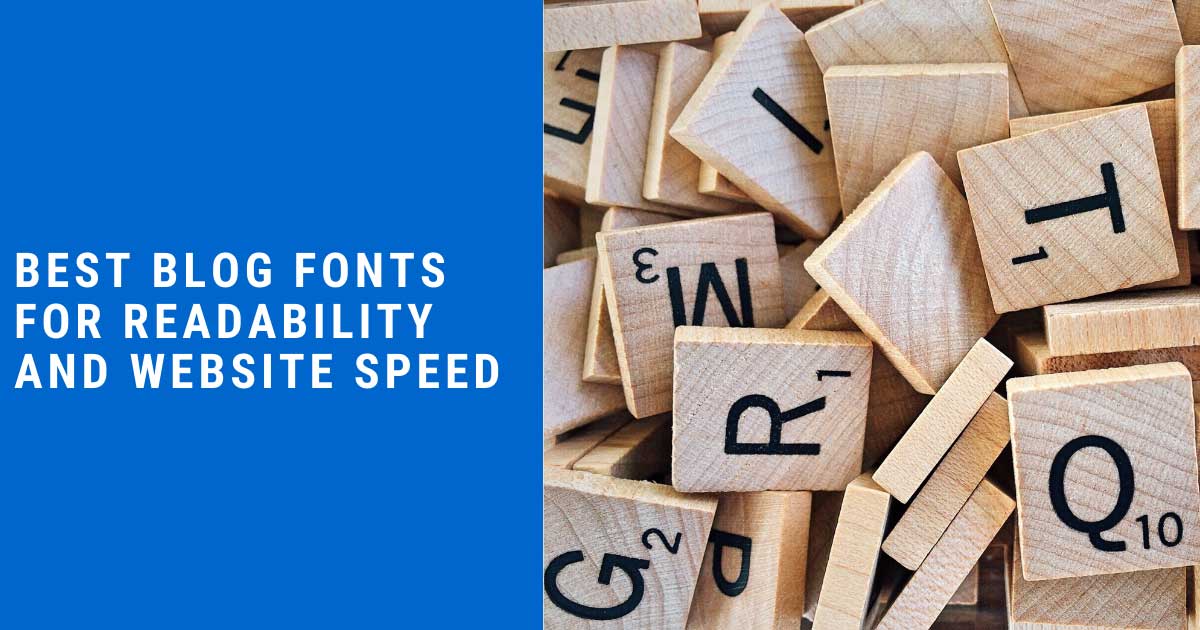Best Blog Fonts For Readability And Website Speed
Some people never think about the font on their blog. They just use whatever is default in their theme or page builder. On the flip side others agonize over font selection. I’m going to argue that font selection is important but knowing a few key things will help you pick the best blog fonts.
Getting people to your blog is one of the hardest things. Once they are there you want them to read your posts. Did you know the font you choose could make people hit that back button faster?
It is about commitment.
It may sound silly but someone reading your blog post is a commitment. These days there are so many posts on social media that take milliseconds of commitment to consume. Asking someone to spend even 2 minutes to read your blog to the conclusion could be a big ask depending on the person.
The blog fonts you choose affect the reader’s ability to gauge the time it will take to read your post. If they think they can read it faster, it will seem like less of a commitment and are more likely to stick around.
Hyunjin Song and Norbert Schwarz ran an experiment where they wrote the instructions for an exercise in 2 separate fonts. The first was a simple font (Arial) and the other was a harder to read font (Brush). On average the people who read the Arial version assumed the exercise would take 8.2 minutes to complete. While the people who read the exact same steps written in Brush assumed the exercise would take 15.1 minutes to complete.
That is crazy.
How could the font determine how long it will take you to complete an exercise? It can’t but it can affect a persons perception of time. Perception is reality. You want people to perceive your blog post as quick and easy to read.
Best blog fonts for readability
Serif or sans-serif, that is the question.

Fonts for blog, sans-serif is almost always the answer. There is one very common exception to this. Georgia. The Georgia font is a serif font that was designed for Microsoft with the intent to be used on screens. The result is that it gives you a more elegant look than many sans-serif fonts while still having great readability on a screen.
Now that we have Georgia, the serif exception out of the way. Here are the best sans-serif fonts that are easy to read:
- Arial
- Helvetica
- Lato
- Open Sans
- Proxima Nova
- Roboto
- Tahoma
- Ubuntu
- Verdana
Best blog fonts for website speed
The best blog fonts for website speed are web safe fonts.
What is a web safe font? A web safe font (sometimes called a system font) is a font that is included in common operating systems.
That means that you don’t have to load it. It is already included in your visitors computer, phone or tablet.
While it is easy to load any font you want these days and Google fonts has brought a huge selection of fonts to the public for free, for most cases you should stick to web safe fonts.
Luckily some of the most readable fonts for blogs are also web safe fonts.
From our list above, these fonts are also web safe fonts that won’t impact your blog’s speed:
- Arial
- Georgia
- Tahoma
- Verdana
If you are curious to see which fonts are included with operating systems, here is Microsoft and Apple‘s lists.
Best blog font combinations
Font pairing can add more depth to your blog design. Setting a different font family for the headings and body copy. Here are some popular combinations:
- Arial and Georgia
- Arial and Verdana
- Georgia and Verdana
- Tahoma and Verdana
Whether you choose to use the same font for both your blog posts and blog headings or you choose to use a pair, you won’t go wrong with these web safe fonts.
Conclusion
The best blog fonts are:
- Arial
- Georgia
- Tahoma
- Verdana
They are all web safe fonts which make them perfect to use on a blog. They are the most readable fonts and even pair nicely with each other.
What do you think? What blog post fonts are you going to use?
Let us know in the new Pro Site Help Facebook group.







